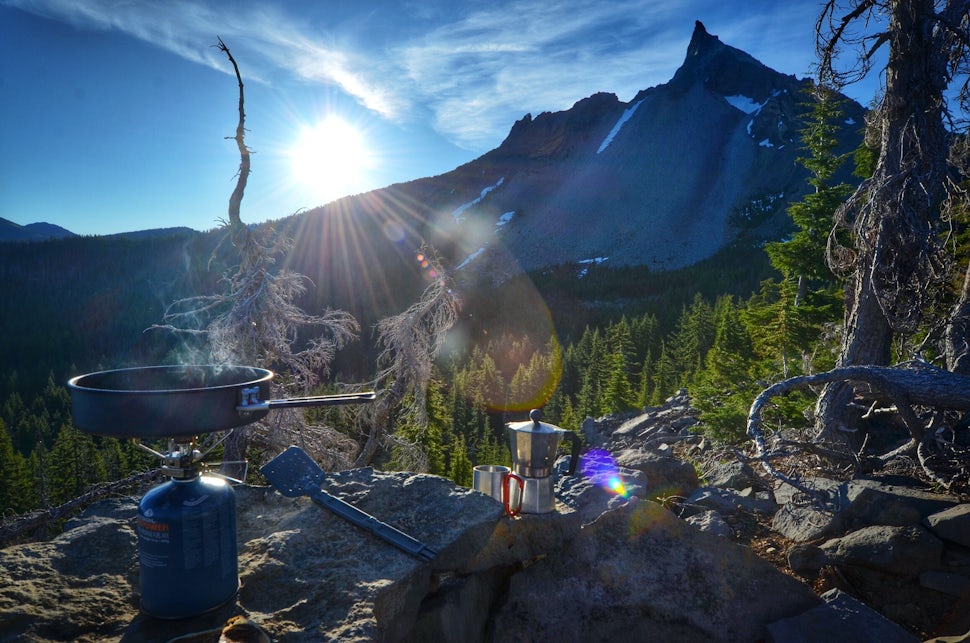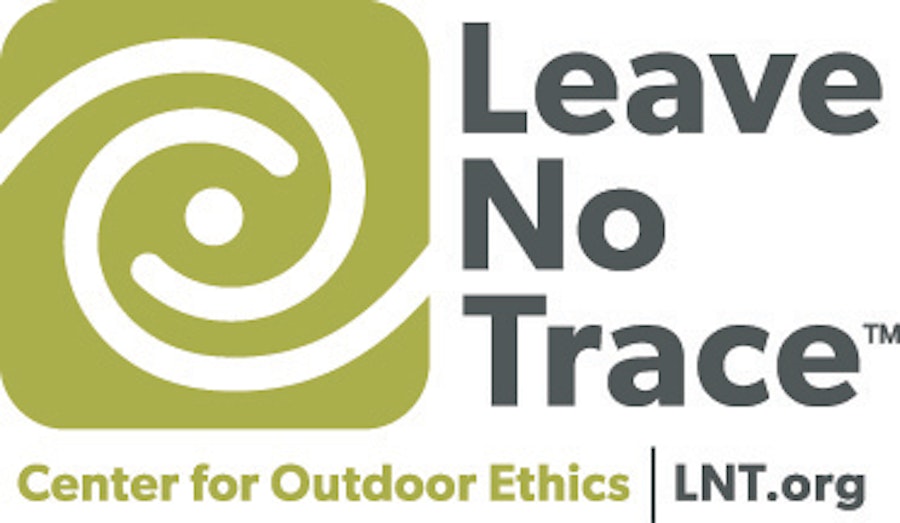How To Know What Kind Of Camping Stove You Should Use
Ready to bring the heat?

The whole camp cooking process isn't like whipping something up in your kitchen. You are literally "playing with fire" and that can get a little intimidating, especially when you aren't sure what kind of fire to use.
The most common heat source used by campers is a stove, so we’ll spend most of our time talking about stoves, but you can also use a grill or an open fire pit so we’ll talk about cooking a little closer to cave man style using those heat sources as well.
Single Burner Backpacking Stove
These babies are light and affordable. Prices start at around $30 for one made by the major manufacturers and $10 for an off-brand. A backpacking stove is typically a single piece that screws on the top of a fuel canister.
So what is in a canister? It is filled with isobutane (primarily) and propane fuel. Isobutane burns hot and clean, and in colder conditions (like a chilly fall night). To get them, you’ll have to go to a outdoor store. These canisters tend to be a little more expensive than propane, which you even get at a grocery store.
Why would you want to use a single burner? There are a couple of reasons. First, you are on a small budget and want an inexpensive first stove. Second, you are a minimalist and want to keep your gear small, so it is easy to carry and doesn't take a lot of room to store at home. Third, you aren't making things that are very complicated or feeding a bunch of folks.
So if quickly boiling water or frying something up will get the job done. Great! Don't complicate things, this sort of setup should work for you. If you do have a bigger group you can use a couple of them to make sure you can quickly cook for everyone.
But there are also some downsides. Single burners tend to be sensitive to wind and they don't typically come with windscreens. So you may end up using your body to shield the flame so it can actually heat what you are cooking. This process can add significant cooking time.
To add to that issue, they are less stable than camping stoves. So watch out because they easily tip over. But on the whole, single burner backpacking stoves are a great first camp kitchen purchase. In combination with an open fire, you have a ton of backcountry cooking options when you use this setup.

Double Burner Camping Stoves
Double burner stoves haven't changed much over the years, but that's because these really make sense for portable camp cooking. They are a little more expensive starting at around $60 for one made by the major manufacturers and $30 for an off-brand. The one I have is a little higher end because, in my opinion, you should buy one of these and if you take care of it, the stove will last for decades.
These guys mostly use propane, which is attached to the side using a metal tube. The nice thing about this fuel type is you can find it just about anywhere. They also come with built in windscreens that help protect your flame, which makes the heat source burn hotter, thus cooking more efficiently and using less fuel. That means when you boil water on a two burner it will take less time than on a single burner-backpacking stove.
Why would you want a double burner? You'd want one because you want space to cook in an environment that is more like your stove at home. To be honest, other than having to light the burners, there isn't a lot of difference between a two burner camping stove and a home stove top. The higher end versions will also be a little larger and give you enough space for full sized pots and pans compared with the budget versions, which might require you to invest in more compact camping size cookware.
That brings us to the complications a double burner stove is heavy and bulky. That means they are really stable, but it also means you don't want to carry them very far. If you live in a tiny urban apartment, it is hard to find room to store them. But if you are looking to make a mobile feast in the woods, this is likely a good option for you.

Covered Grill and Open Fire Pit
When I think of outdoor cooking, my mind goes to the covered grill. They come in two types -- the Weber style fueled by charcoal and your standard propane grill. You'll find covered grills at some campsites, but you can also bring your own, it just requires an investment. They start at about $30 for a basic charcoal grill and can go up from there. No matter what kind you choose, what you’re buying is the ability to grill food evenly.
Can't I just grill with the fire pit at the site? The simple answer is yes you can grill using the fire pit provided at most developed campsites. However, without a top you'll lose a lot of heat and have little or no control over the distribution of the heat across whatever you are cooking especially if you use wood logs as your heat source. Just like the camping stove, a dedicated portable camping grill brings up issues around storage and weight. If you are into car camping and want to take your game to the next level, I suggest getting a grill and bringing it along.
There is no right or wrong answer to what kind of fire source is best for camp cooking. If you are ready for a quick review, check out this video to get the highlights on bringing the heat for your camp cookery.
Cover photo: Talia Touboul
Don't see your favorite adventure on The Outbound? Show us by creating an adventure.
Please respect the places you find on The Outbound.
Always practice Leave No Trace ethics on your adventures. Be aware of local regulations and don't damage these amazing places for the sake of a photograph. Learn More
We want to acknowledge and thank the past, present, and future generations of all Native Nations and Indigenous Peoples whose ancestral lands we travel, explore, and play on. Always practice Leave No Trace ethics on your adventures and follow local regulations. Please explore responsibly!
Do you love the outdoors?
Yep, us too. That's why we send you the best local adventures, stories, and expert advice, right to your inbox.









